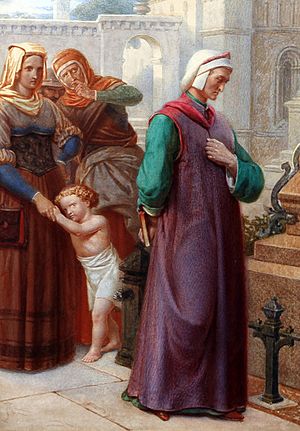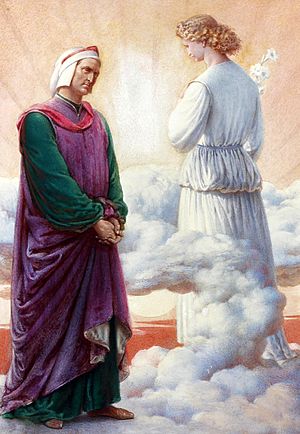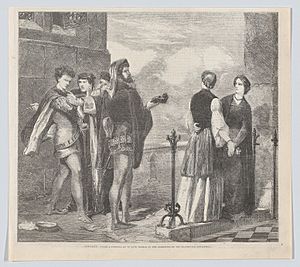Cave Thomas facts for kids
William Cave Thomas (born May 8, 1820 – died 1906) was an English artist. He was known as a Victorian painter who created art about history, religion, and books. He was also a sculptor and a writer.
Contents
About William Cave Thomas
Early Life and Training
William Cave Thomas was born in London. His father made and gilded (decorated with gold) picture frames. William studied art at the Royal Academy in the 1830s. In 1840, he traveled to Munich, Germany. There, he spent several years at the Academy of Fine Arts. He learned how to do fresco painting, which is painting on wet plaster walls. He worked in places like the basilica of St. Boniface's Abbey. He was taught by Heinrich Maria von Hess and was influenced by artists like Peter von Cornelius and Johann Friedrich Overbeck. These artists were part of a group called the "Nazarenes" who painted in a special religious style.
In 1843, Thomas came back to London. He became a successful painter and taught at an art school. He also wrote articles for art magazines like The Builder.
Painting for Parliament
In 1842, the British government started a competition. They wanted to choose artists to create artwork for the new Houses of Parliament. A special group was formed, including Prince Albert. Over three years, about 200 artists showed their large black and white drawings (called cartoons) at Westminster Hall. These drawings were 10 to 15 feet tall!
From these many artists, six were chosen. William Cave Thomas was one of them. He chose subjects like "St Augustine Preaching to the Britons" and "Justice." He won £400 for his works "Justice" and "Philosophy." His painting Justice was later used as a model for a fresco (wall painting) of Lady Justice in the House of Lords.
Friends with Famous Artists
William Cave Thomas was connected to the Pre-Raphaelite Brotherhood. This was a group of young artists who wanted to paint in a new, more realistic way. They were inspired by art from before the famous artist Raphael. Thomas was a friend of Dante Gabriel Rossetti. He even shared a studio with Ford Madox Brown in the 1840s. Some people think he gave the name The Germ to their famous magazine.
His Artworks
"Rivalry"
His painting Rivalry was shown at the Royal Academy in 1855. It was also displayed at a big art show in Manchester in 1857. This painting later went to Australia in 1861. There, it was called "without doubt, the finest work of art in the colony." William Cave Thomas had a brother, James Henry Thomas, who supported art in Sydney, Australia.
"Albrecht Dürer"
Albrecht Dürer is a large oil painting of the famous artist Albrecht Dürer. It was ordered in 1863 for the Victoria and Albert Museum. The museum wanted portraits of great artists to be copied as mosaics. Many artists were asked to create these portraits. In the end, Thomas's painting was not used for the mosaic.




